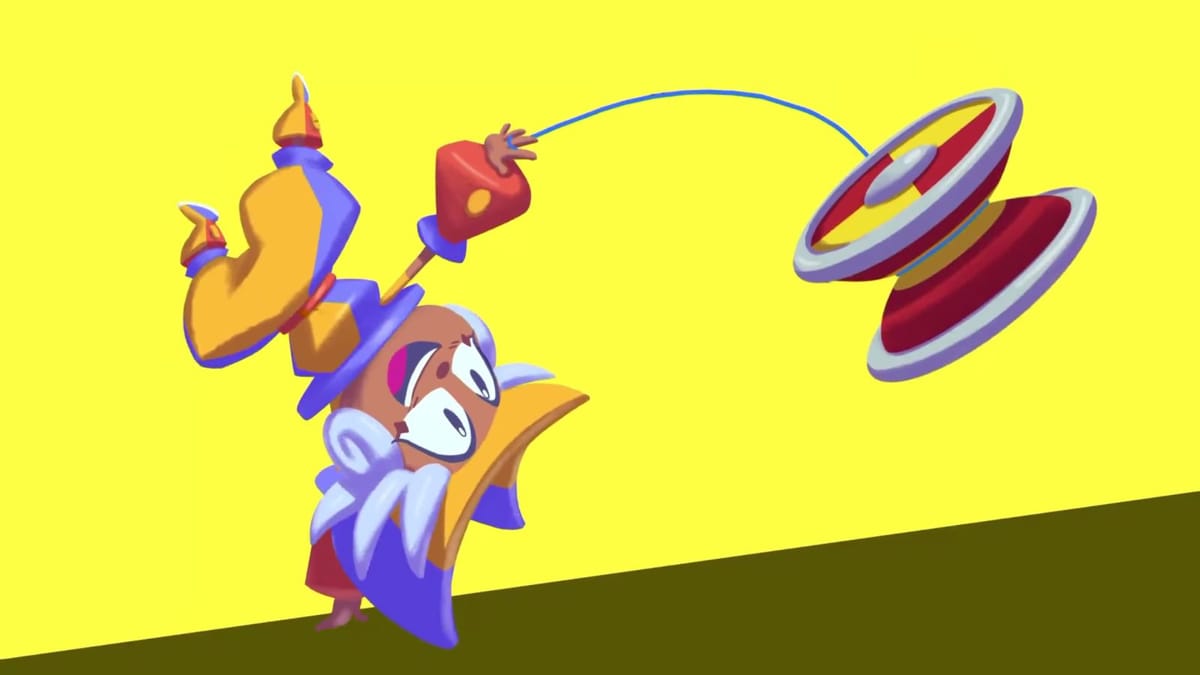
Editors Jack Zustiak and David Flynn had the chance to play a good chunk of the upcoming game, Penny’s Big Breakaway. We had a lot to say about the game in an overly rambly, secret document which will be forever sealed in the GamingTrend vaults. Instead, here’s a condensed summary of our thoughts.
To start things off, let’s talk about how the game generally feels to play. It reminds me a lot of a 3D Mario game like Super Mario 64, or especially Super Mario Odyssey. Your character Penny uses a yo-yo as her primary means of transportation, and doing that successfully requires some finesse. You can swing, dash, and double jump all over the place to control your movement in the air. By chaining these abilities together, you can seamlessly pull off acrobatic feats that allow you to traverse each level with style. There’s a big learning curve to moving Penny well – it’s the kind of game where I wanted to take a few minutes to just play around with the controls before playing the game proper. It’s enough to make you wish that there was some kind of hub to play around in like Peach’s Castle in Mario 64.
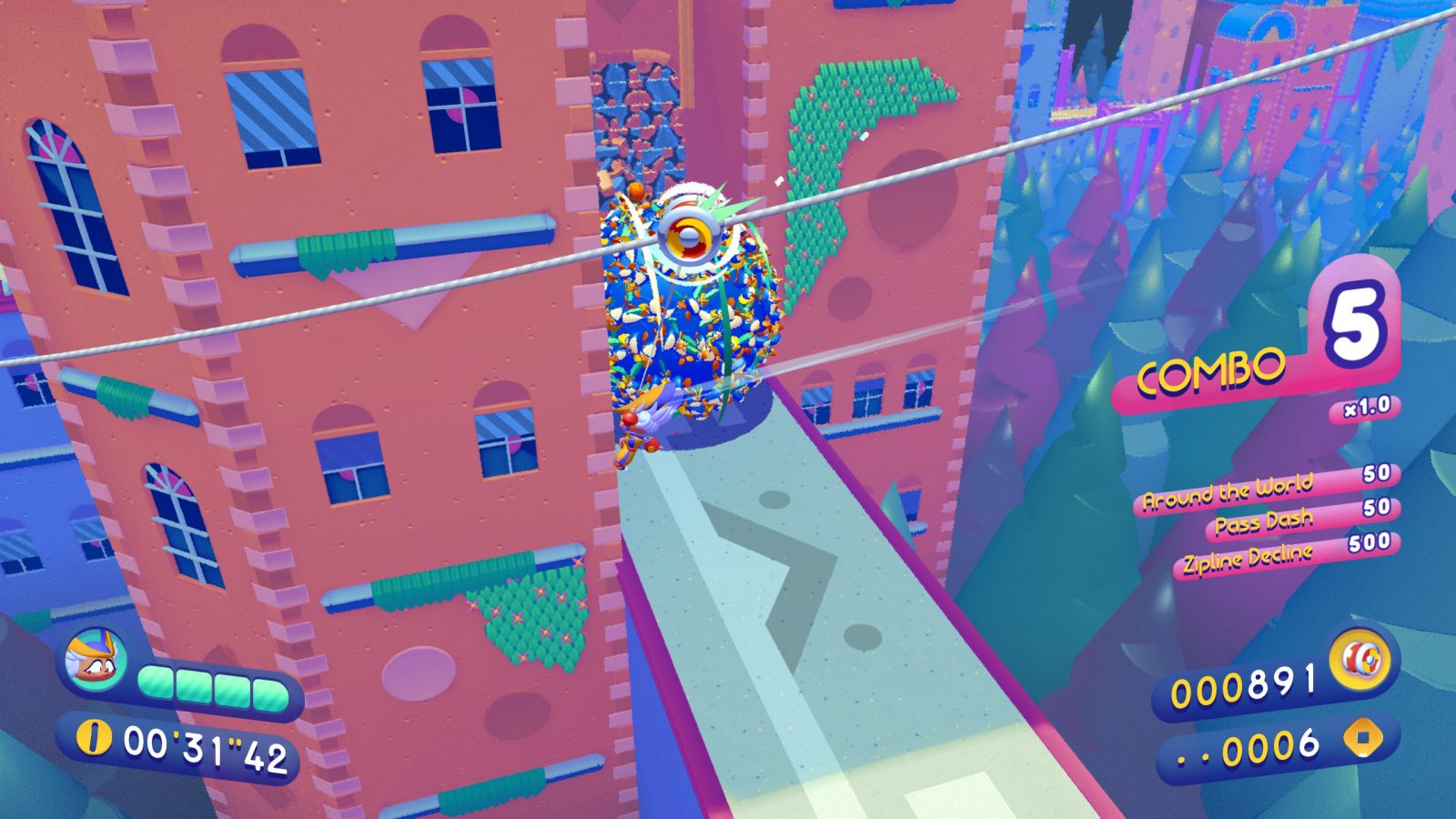
You don’t want to hear about Mario, though. If you’re familiar with this game at all, you probably know that it’s being developed by Evening Star, a team of developers who previously helped bring the critically acclaimed Sonic Mania to life. Rather than any talk about Mario or even Penny herself, you probably want to know just one thing: where’s Sonic?
Well, you can find him in the momentum mechanics, particularly when you’re turning your yo-yo into a car you can ride around on. The slopes and surfaces affect your ability to control both your direction as well as how fast you can go. Similar to the basic controls, there’s a learning curve here that Sonic fans in particular will find familiar. Overall, the movement in Penny’s Big Breakaway is super fun to do, especially when you get it right. As you’d expect, the game mechanics are well suited for speed running, and in fact replaying levels in the Time Attack mode was where I enjoyed the game the most.
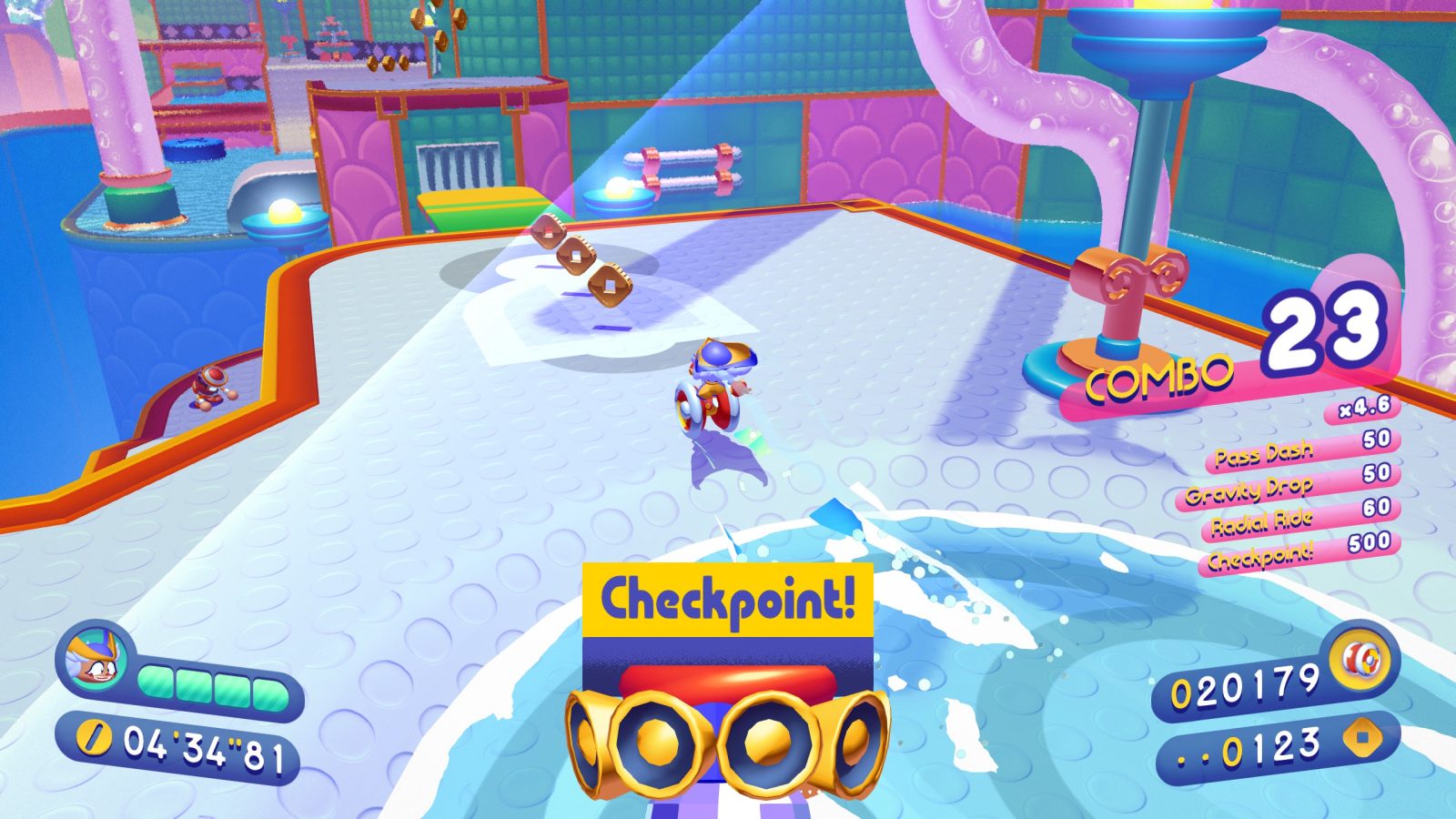
If master isn’t what motivates you, a combo system encourages you to get the most out of the game’s movement. Each type of yo-yo action gives you one point on a combo counter, and as long as you never hit the ground without taking an action, the chain will keep growing and your score will keep multiplying. I found this system particularly helpful as it teaches you some of the nuances to the mechanics, like when and how you can chain actions together.
There’s what I’d describe as a “realism” to how Penny’s yo-yo functions. Just because you perform the action doesn’t mean it’s automatically going to happen and keep you moving. You can’t just automatically cancel Penny’s yo-yo moves into another without consequences – you can only perform one double jump, swing, and dash each before touching the ground again. You have to think about when and where you’re pressing buttons. The car is a big example: if you’re trying to chain jumps and swings and then transition to the car when you land, you actually have to be close enough to the ground before you do the car for it to actually work, otherwise your yo-yo will bounce back up before you hit the ground. Similarly, you can’t always pull into your yo-yo with a dash if it’s in the middle of a different action. It really feels like you’re performing, which fits Penny’s occupation well. You want to go fast, and that naturally leads to you looking cool while chaining all these different tricks together. It’ll be interesting to see speedruns of this once it’s finally out to a wider audience.

I’m also interested to see what people’s preferred control method ends up being. The default controls, and the ones that the developers recommend, mimics the iconic platforming masterpiece Ape Escape. You move Penny with the left stick and move your yo-yo with the right stick. This offers a ton of freedom because you can be moving in one direction while firing out the yo-yo in another. David prefers the dual stick controls, while I ended up leaning more on the “simple mode” controls.
The simple mode lets you use the normal face buttons to toss out the yo-yo in the direction you’re facing. We both played on the Steam Deck and, at least for me, the control scheme feels a little off with the normal layout. I found it was a lot more intuitive to press the buttons, and was surprised by how well it still worked out. There’s one boss where you can kind of see why the right stick aiming is ideal, but outside of that, I think the simple aiming works just fine. Steam Deck lets you rebind things yourself, too, but an in-game option to change the controls would be helpful as well.
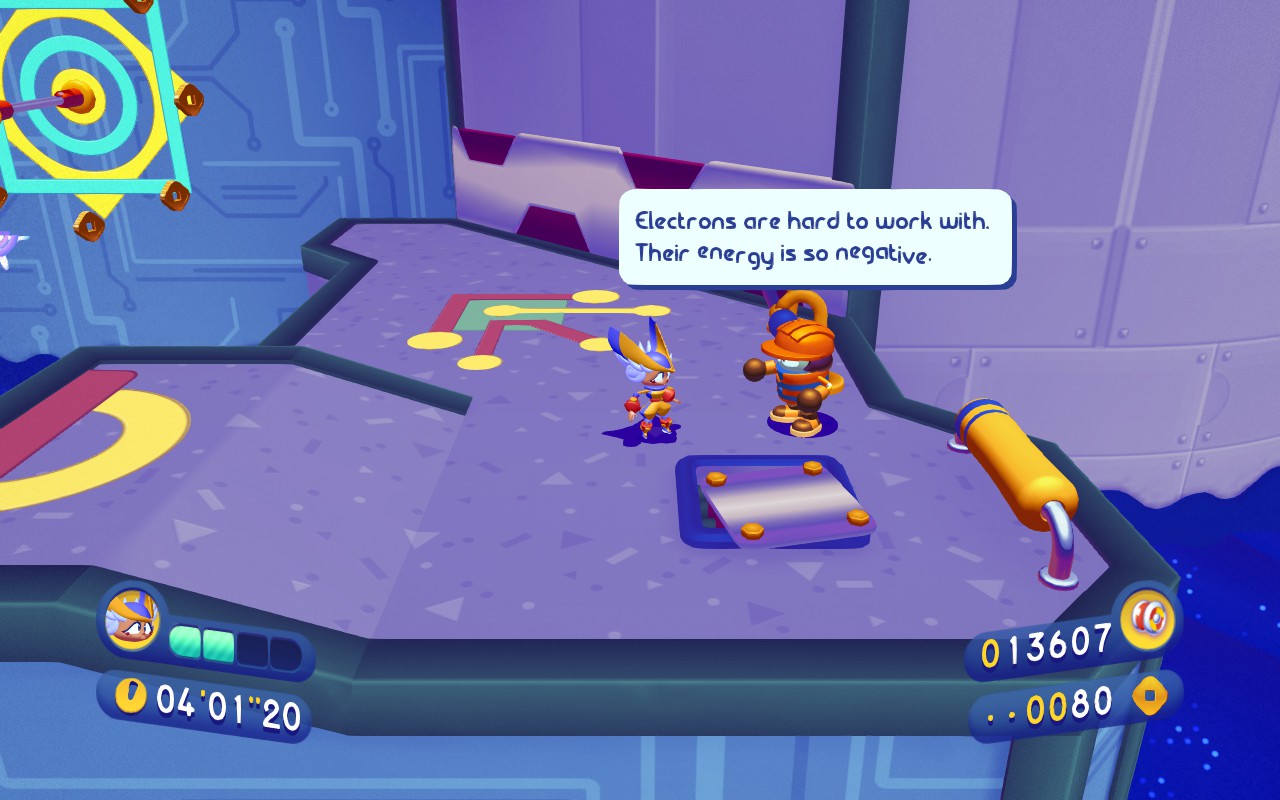
Penny’s Big Breakaway makes a great first impression with its movement abilities, and whenever you’re keeping things moving it’s great. That’s clearly what the game wants to focus on, as your primary obstacles happen to be penguins that are meant to slow you down. One penguin won’t harm you, but if five grab on to you, Penny gets captured and needs to restart at the next checkpoint. It’s an interesting way to reframe the idea of combat in a game like this. In games like Mario or Sonic is usually either extremely simple or bogs the game down. Here they feed directly into the positives of the game – they’re a great way to keep things moving, especially since you get them off of you by performing yo-yo moves. They feel less like enemies, and more like moving blobs of obstacles you need to avoid. It feels great when you can just zoom over them by getting a ton of momentum beforehand.
Although the game emphasizes speed, you can stop to smell the penguins. In each level, side quests called Dilemmas and collectables encourage exploration similar to how the timer and combo system encourages speedy play. These exploration elements add some depth to the levels as well as a lot of personality, but they don’t necessarily mesh well with the game’s fast-footed nature. To start side quests you need to walk up to the characters to begin the quest, and while you don’t technically need to slow down for that, in most cases you want to. You want to read the fun dialogue (there are some INCREDIBLE puns here) and it’s not always easy to parse at a glance what the game wants you to do. You have to take a few seconds to actually read the text, which not only means that your combo will likely be broken, but can also make the game harder than it should be.
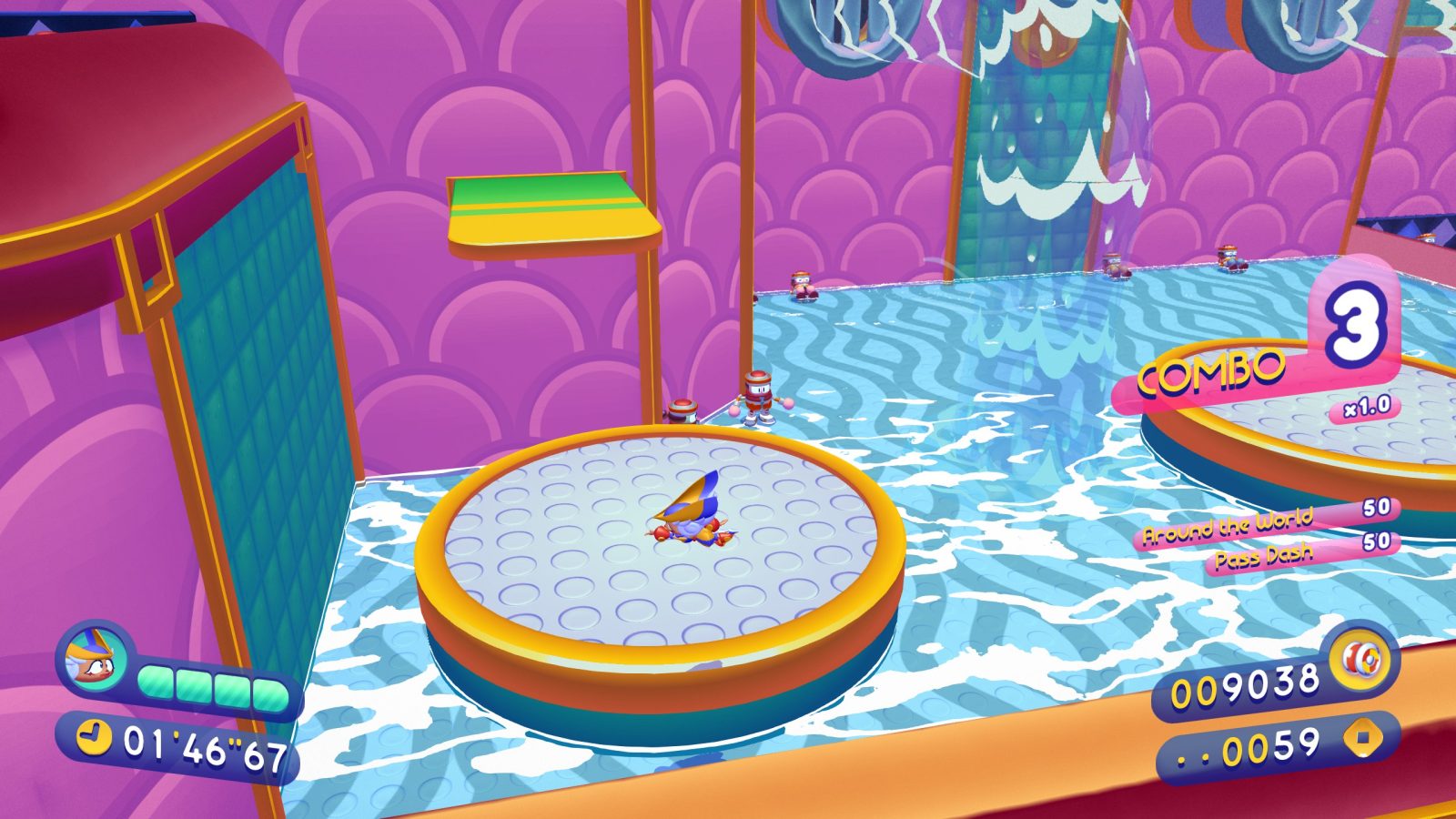
Some side quests are extremely time sensitive and having to stop and read puts you on the back foot to completing them. If you fail the quest, you have to restart if you want the level’s unlockable postcard for getting a good score. I like that there’s a good incentive for scoring well, I just wish there was a more traditional ranking system because currently it’s all or nothing. Ultimately it’s a game built for replays, so it’s not like you have to do everything in one run, but it can be difficult to accept that you can’t have it all on your first run through a stage. We’re Pro Gamers, after all. Having the timer constantly running really makes you want to hurry while everything else makes you want to stop and enjoy the sights. Hiding the timer on a first run in story mode may help relieve that pressure, but it’s a tough balancing act. It’s something we’re interested in seeing how the final game addresses.
There are also some nuances to the controls that we feel have some room for improvement. The biggest thing that we thought could use some work was the auto targeting on the yo-yo for some objects. You’re supposed to fire your yo-yo at a target and you’ll either pick it up or fly towards it, but the rules are inconsistent. Some objects require you to be super close, while there are some you can grab from relatively far away. You eventually learn what the real rules are as you replay stages, but the first time around can be frustrating.

Similarly, it can be difficult to parse how your yo-yo car will react to the ground. Sometimes you keep your speed, other times it will slow down, or will even blast you into an unexpected direction. To an extent these problems go away as you memorize the levels and familiarize yourself with the mechanics, but we can’t help but feel some tuning would make these mechanics more consistent and intuitive. The game generally ran great on Steam Deck, though we noticed that visually it was a little stretched and on a monitor the cutscenes looked lower resolution than the settings implied. The build we played is obviously a work in progress, so we expect a lot of this will be smoothed out by the final release.
Still, even with some room for improvement, Penny’s Big Breakaway proves to be a very charming game. The art design is poppy and fun, while the music is bubbly and catchy. Sonic fans will have a lot to look forward to with the soundtrack – it’s reminiscent of Mania (with the same composer) while also having some unique touches to make it stand out. I’m a big fan of the first level song in particular, which almost gives the impression that the hostile penguins are singing. Between its cheery aesthetic and unique platforming, we’re very excited to come back for another performance when Penny’s Big Breakaway is ready for showtime later this year.
